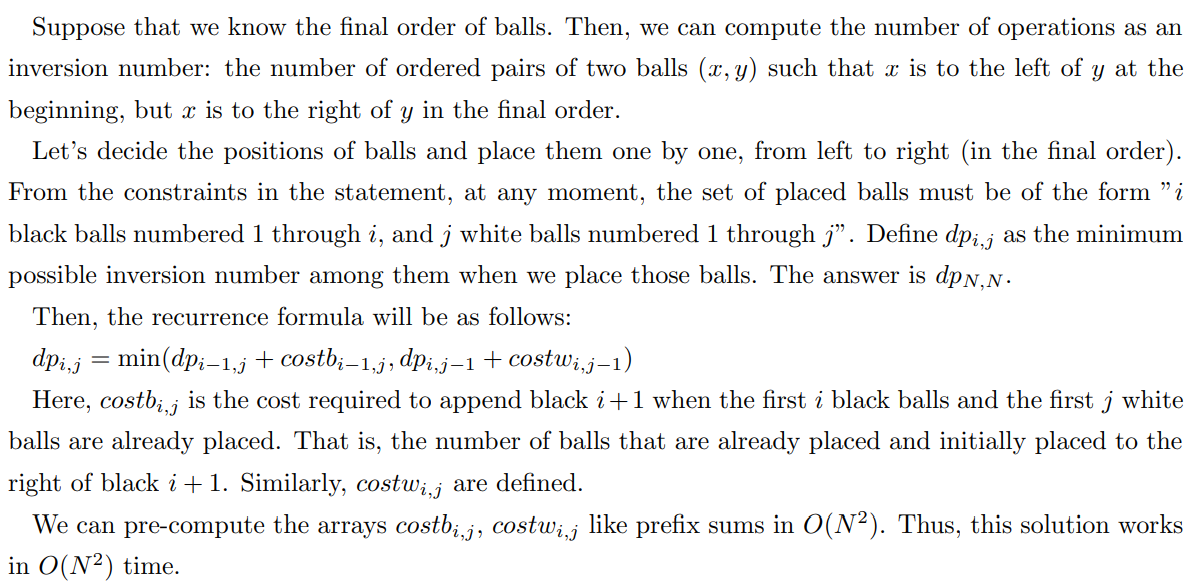ARC097E. Sorted and Sorted
By solving this problem I better understand the concept of inversion number (aka inversion count). Let \(p\) be a permutation of \(N\) distinct elements, and \(q\) be another permutation of those elements. The inversion number between \(p\) and \(q\) is defined as the number of ordered pairs of elements \((x, y)\) such that \(x\) is to the left of \(y\) in permutation \(p\), but \(x\) is to the right of \(y\) in permutation \(q\), or equivalently as the number of ordered pairs of elements \((x, y)\) such that \(x\) is to the right of \(y\) in permutation \(p\), but \(x\) is to the left of \(y\) in permutation \(q\).
The inversion number between \(p\) and \(q\) is the minimum possible number of operations of swapping two adjacent elements to change \(p\) into \(q\).
Official tutorial:

code
int main() {
int n;
scan(n);
vi pos_w(n + 1), pos_b(n + 1);
rng (i, 0, 2 * n) {
char color;
int number;
scan(color, number);
if (color == 'B') {
pos_b[number] = i;
} else {
pos_w[number] = i;
}
}
// nb_after[i][j] : number of black balls placed after position i numbered between 1 and j.
// nw_after[i][j] : number of white balls placed after position i numbered between 1 and j.
vv nb_after(2 * n, vi(n + 1)), nw_after(2 * n, vi(n + 1));
rng (i, 0, 2 * n) {
up (j, 1, n) {
nb_after[i][j] = nb_after[i][j - 1] + (pos_b[j] > i);
nw_after[i][j] = nw_after[i][j - 1] + (pos_w[j] > i);
}
}
// dp[i][j] : minimum possible inversion number among first i black balls and first j white balls
vv dp(n + 1, vi(n + 1));
up (i, 1, n) {
dp[i][0] = dp[i - 1][0] + nb_after[pos_b[i]][i - 1];
}
up (i, 1, n) {
dp[0][i] = dp[0][i - 1] + nw_after[pos_w[i]][i - 1];
}
up (i, 1, n) {
up (j, 1, n) {
dp[i][j] = min(dp[i][j - 1] + nb_after[pos_w[j]][i] + nw_after[pos_w[j]][j - 1],
dp[i - 1][j] + nb_after[pos_b[i]][i - 1] + nw_after[pos_b[i]][j]);
}
}
println(dp[n][n]);
return 0;
}




 浙公网安备 33010602011771号
浙公网安备 33010602011771号